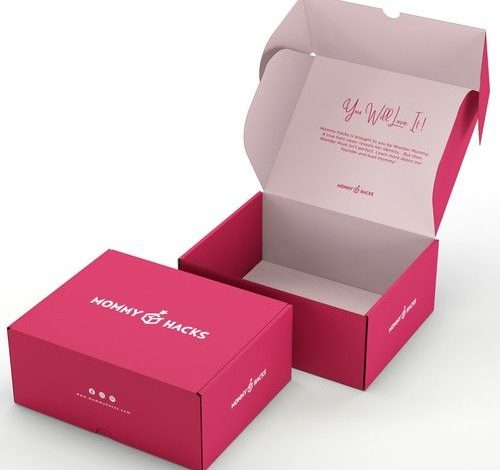Product Wrapping for Herbal Extracts: A Comprehensive Guide

Product wrapping for herbal extracts is a critical aspect of preserving the quality, potency, and freshness of these natural wonders. Herbal extracts are concentrated forms of plant compounds known for their various health benefits. However, their effectiveness can be significantly compromised if not packaged correctly. In this comprehensive guide, we will delve into the world of product wrapping for herbal extracts, exploring the techniques, materials, and strategies essential for maintaining the integrity of these valuable products.
The Importance of Proper Product Wrapping
Imagine you’ve spent countless hours cultivating, harvesting, and processing herbal extracts. You’ve carefully extracted the potent compounds that offer therapeutic properties. Now, the final step is packaging, and it’s not one to be taken lightly. Proper product wrapping ensures that your herbal extracts reach consumers in the best possible condition. It safeguards the extracts from external factors that can degrade their quality, such as light, moisture, and air. Product wrapping is more than just a protective measure; it’s a way to showcase your commitment to quality and the well-being of your customers. In this article, we will explore every facet of custom CBD boxes product wrapping for herbal extracts, from selecting the right materials to complying with regulations and even marketing your products effectively.”
What Are Herbal Extracts?
Before delving into the specifics of product wrapping, it’s essential to understand what herbal extracts are. Herbal extracts are concentrated solutions derived from various parts of plants, including leaves, stems, roots, and flowers. These extracts contain a high concentration of bioactive compounds that give plants their therapeutic properties.
Herbal extracts have been used for centuries in traditional medicine and are becoming increasingly popular in modern healthcare. They offer a natural alternative to synthetic drugs and are valued for their minimal side effects and holistic approach to health.
Benefits of Herbal Extracts
The benefits of herbal extracts are multifaceted. They can provide relief from various health issues, promote well-being, and enhance overall health. Some of the common benefits include pain relief, immune system support, stress reduction, and improved digestion.
The unique combination of active compounds in herbal extracts makes them versatile for addressing a wide range of health concerns. As consumer interest in natural remedies continues to grow, the market for herbal extracts is expanding rapidly.
In the following sections, we will explore how product wrapping plays a pivotal role in preserving these valuable benefits.
Why Does Product Wrapping Matter?
The significance of product wrapping becomes evident when you consider the delicate nature of herbal extracts. These extracts are susceptible to degradation when exposed to environmental factors such as light, moisture, and air. Without proper protection, their potency can diminish rapidly.
Product wrapping serves as a shield, safeguarding herbal extracts from these elements. It acts as a barrier against UV rays, which can break down the active compounds in extracts. Moreover, it prevents moisture from seeping in, which could lead to mold growth or spoilage. By sealing the product in an airtight environment, wrapping maintains the integrity of the extract.
How Does Proper Wrapping Preserve Herbal Extracts?
Proper wrapping preserves herbal extracts by creating an environment that minimizes the factors contributing to degradation. For example, wrapping in opaque, UV-resistant materials prevents exposure to light, ensuring that the extracts remain stable. Additionally, airtight packaging prevents oxygen from interacting with the compounds in the extracts, preserving their freshness and potency.
In essence, product wrapping acts as a time capsule, allowing herbal extracts to maintain their therapeutic properties until they reach the hands of consumers. Without it, the shelf life and effectiveness of these extracts would be severely compromised.
Choosing the Right Wrapping Material
Selecting the appropriate wrapping material is crucial to ensuring the longevity and quality of herbal extracts. There are several options available, each with its own set of advantages and considerations.
1. Glass Containers: Glass is an excellent choice for product wrapping, especially for liquid herbal extracts. It is impermeable, preventing the exchange of gases between the inside and outside of the container. Additionally, glass is inert, meaning it won’t interact chemically with the extracts.
2. Amber or Dark Glass: To further protect against light exposure, amber or dark glass containers are often used. These containers are particularly effective at blocking harmful UV rays that can degrade the extracts.
3. Plastic Containers: Plastic containers are lightweight and shatterproof, making them a practical choice for certain herbal extracts. However, it’s crucial to select high-quality, food-grade plastics to avoid any potential chemical leaching.
4. Foil Pouches: Foil pouches are ideal for powdered or granulated herbal extracts. They provide a barrier against moisture and oxygen and are often resealable, allowing for multiple uses.
5. Eco-Friendly Options: As environmental concerns grow, there is a rising demand for eco-friendly wrapping materials. Biodegradable options like kraft paper or compostable plastics are gaining popularity among conscious consumers.
Environmentally Friendly Options
In an era of increased environmental awareness, it’s essential to consider eco-friendly wrapping materials. These materials not only protect your herbal extracts but also align with sustainable practices.
Kraft paper, for example, is an eco-friendly option that provides a rustic, natural look. It’s ideal for wrapping dry herbal extracts and can be recycled or composted. Similarly, compostable plastics offer the convenience of traditional plastics without the long-lasting environmental impact.
By choosing environmentally friendly wrapping materials, you not only contribute to preserving herbal extracts but also demonstrate your commitment to a greener future.
We will explore the best practices for effectively using these materials to wrap herbal extracts and preserve their quality.
Techniques for Wrapping Herbal Extracts
Properly wrapping herbal extracts involves a few key techniques:
1. Cleanliness: Before beginning the wrapping process, ensure that the workspace and your hands are clean and free from any contaminants. This helps prevent the introduction of unwanted substances into the extracts.
2. Proper Sealing: Whether you’re using glass containers, plastic, or foil pouches, make sure they are tightly sealed. Airtight seals are essential to keep out oxygen and moisture.
3. Labeling: Clearly label each wrapped product with the name of the extract, its potency, expiration date, and usage instructions. This information helps consumers make informed choices and ensures product safety.
4. Temperature Control: Store herbal extracts in a cool, dry place away from direct sunlight and temperature fluctuations. This maintains the stability of the extracts and prolongs their shelf life.
Ensuring Freshness and Quality
Preserving the freshness and quality of herbal extracts is not only about the choice of wrapping material but also about the overall packaging process. Here are some additional tips:
1. Quality Control: Implement a rigorous quality control process to ensure that only the highest-quality extracts are packaged. This includes testing for potency, purity, and consistency.
2. Batch Control: Keep careful records of each batch of herbal extracts to track their source, production date, and any quality control measures applied. This information is valuable for traceability and accountability.
3. Storage Conditions: Maintain optimal storage conditions throughout the supply chain. This means ensuring that retailers and distributors also adhere to proper storage guidelines to prevent spoilage or degradation.
4. Consumer Education: Educate your customers about the importance of proper storage and handling of herbal extracts. Providing clear instructions on how to maintain product quality can enhance the overall user experience.
We will delve into common mistakes to avoid when wrapping herbal extracts and explore cost-effective solutions for product wrapping.
Pitfalls in Product Wrapping
Despite the best intentions, mistakes can happen in the product wrapping process. It’s essential to be aware of these common pitfalls to avoid compromising the quality of your herbal extracts.
1. Inadequate Sealing: Failing to seal containers properly can allow air and moisture to enter, leading to spoilage and degradation of the extracts.
2. Use of Inappropriate Materials: Using the wrong wrapping material for a specific type of extract can result in chemical reactions or contamination.
3. Poor Labeling: Inaccurate or incomplete labeling can confuse consumers and compromise safety.
4. Ignoring Regulatory Requirements: Neglecting to comply with labeling and packaging regulations can lead to legal issues and damage your brand’s reputation.
5. Overlooking Quality Control: Skipping quality control steps can result in the distribution of subpar products, damaging customer trust.
How Mistakes Affect Product Quality
Mistakes in product wrapping can have serious consequences for the quality of herbal extracts. For example, inadequate sealing can lead to oxidation, causing a loss of potency. Using the wrong materials can result in chemical interactions that alter the composition of the extract.
Poor labeling and failure to comply with regulations can lead to consumer confusion and potential health risks. Moreover, overlooking quality control can result in the distribution of extracts that do not meet your brand’s standards, leading to customer dissatisfaction.
In the next section, we will explore cost-effective solutions for product wrapping, ensuring that you can maintain product quality without breaking the bank.
Budget-Friendly Wrapping Options
Maintaining high-quality product wrapping doesn’t have to be a drain on your budget. There are several cost-effective solutions available:
1. Bulk Purchasing: Buy wrapping materials in bulk to take advantage of discounts offered by suppliers. This can significantly reduce your per-unit packaging cost.
2. Standardized Packaging: Consider using standardized packaging for your herbal extracts. This simplifies the wrapping process and reduces the need for custom-sized containers, which can be expensive.
3. Minimalistic Design: Embrace a minimalistic design approach for your packaging. Simple, clean designs can be both cost-effective and visually appealing.
4. Eco-Friendly Materials: Explore eco-friendly wrapping materials, which are often competitively priced. Eco-conscious consumers may also be willing to pay a premium for products with sustainable packaging.
Balancing Quality and Expense
While cost-effective solutions are essential, it’s crucial to strike a balance between affordability and product quality. Cutting corners on packaging can ultimately harm your brand’s reputation and customer satisfaction.
Invest in high-quality materials that provide the necessary protection for your herbal extracts. It’s often more cost-effective in the long run to spend a bit more on robust, protective packaging than to deal with the consequences of subpar materials.
In the subsequent sections, we will dive into the intricacies of regulatory compliance and how it affects product wrapping for herbal extracts. We will also explore strategies for marketing your wrapped herbal extracts effectively.
Meeting Legal Requirements
Regulatory compliance is a fundamental aspect of product wrapping for herbal extracts. Different regions and countries have specific regulations governing the labeling and packaging of dietary supplements and herbal products.
Ensure that your products meet all relevant legal requirements. This includes providing accurate ingredient lists, clear usage instructions, and any necessary disclaimers or warnings. Failure to comply with these regulations can result in legal action, fines, and damage to your brand’s reputation.
Stay updated on any changes in regulations and be proactive in making adjustments to your packaging and labeling as needed.
Labeling and Packaging Regulations
Labeling and packaging regulations may include requirements such as:
- Nutritional information
- Allergen declarations
- Certification seals
- Batch and lot numbers
- Expiry dates
- Health claims
- Serving sizes
Familiarize yourself with the specific regulations in your target markets and ensure that your product wrapping and labeling comply with all relevant laws.
We will explore strategies for effectively marketing your wrapped herbal extracts, highlighting the importance of packaging in attracting customers.
Attracting Customers with Packaging
The packaging of your herbal extracts plays a crucial role in attracting and retaining customers. It serves as the first point of contact between your product and potential buyers. Here are some strategies to consider:
1. Visual Appeal: Invest in visually appealing packaging that reflects the essence of your brand and the natural beauty of herbal extracts. Use high-quality images and graphics to create a visually striking design.
2. Transparency: Transparency in packaging, such as clear windows or packaging that showcases the product, can build trust with consumers. They can see what they’re buying, which enhances their confidence in your brand.
3. Storytelling: Use packaging as a storytelling tool. Include information about the history of your brand, the sourcing of ingredients, and the benefits of the herbal extracts. Engage your customers with the narrative behind your products.
4. Differentiation: Make your product stand out on the shelf by using unique shapes, colors, and materials for your packaging. A distinctive look can catch the eye of potential buyers.
5. Sustainability: Highlight your commitment to sustainability by using eco-friendly packaging materials and including relevant certifications or labels. Many consumers prefer products that align with their environmental values.
Branding and Marketing Strategies
Effective branding and marketing strategies can amplify the impact of your product wrapping. Consider the following approaches:
1. Consistency: Ensure that your packaging aligns with your overall brand identity. Consistency in design and messaging across all your products fosters brand recognition.
2. Online Presence: Leverage your online presence to showcase your packaging. High-quality images and detailed product descriptions on your website and social media platforms can attract online shoppers.
3. User-Generated Content: Encourage customers to share their experiences with your products, including photos of the packaging. User-generated content can serve as powerful testimonials and boost your brand’s credibility.
4. Limited Editions: Create limited-edition packaging for special occasions or seasons. Limited editions can create a sense of urgency and exclusivity among consumers.
Incorporating these marketing strategies into your product wrapping and overall branding can enhance your herbal extract business’s visibility and appeal.
In the following sections, we will delve into real-life case studies, exploring success stories in product wrapping within the herbal extract industry. These examples will provide practical insights and inspiration for your own packaging endeavors.
Success Stories in Product Wrapping
To truly grasp the impact of effective product wrapping for herbal extracts, let’s examine some real-life success stories from the industry. These case studies highlight businesses that have leveraged innovative packaging to enhance their brand and attract customers.
Case Study 1: Nature’s Elixir
Nature’s Elixir, a small herbal extract company, transformed its brand by adopting eco-friendly packaging. They switched to recyclable glass bottles and used minimalistic labeling with earthy tones. This not only reduced their environmental footprint but also resonated with eco-conscious consumers. Within a year, their sales soared, and they gained recognition for their commitment to sustainability.
Case Study 2: Herbal Harmony
Herbal Harmony, a family-owned business, decided to emphasize transparency in their packaging. They introduced clear glass jars that showcased the vibrant colors of their herbal extracts. They also included QR codes on labels, allowing customers to scan and access detailed product information. This transparent approach led to increased trust and customer loyalty.
These case studies illustrate how strategic product wrapping can elevate a brand and drive sales. In the next section, we will explore the latest innovations in herbal extract packaging, keeping you up to date with industry trends.
Cutting-Edge Wrapping Technologies
In the ever-evolving world of product wrapping for herbal extracts, innovation is key to staying competitive. Let’s explore some of the cutting-edge technologies and trends that are shaping the future of herbal extract packaging:
1. Smart Packaging: Smart packaging incorporates technology such as QR codes, NFC (Near Field Communication), and RFID (Radio-Frequency Identification) to provide consumers with real-time information about the product. This can include details about the extract’s source, production date, and usage recommendations.
2. Sustainable Materials: The trend toward sustainability continues to grow. Companies are exploring new materials like biodegradable plastics, edible packaging, and reusable containers to reduce environmental impact.
3. Interactive Labels: Interactive labels allow consumers to engage with the packaging. They may include augmented reality experiences, interactive games, or personalized messages, creating a unique and memorable interaction with the product.
4. Tamper-Evident Features: Ensuring product safety is paramount. Tamper-evident features like shrink bands, breakable seals, and holographic labels offer peace of mind to consumers and demonstrate your commitment to product integrity.
5. Customization: Personalized packaging is gaining traction. Companies are offering customization options, allowing consumers to choose label designs, container sizes, and even product formulations tailored to their preferences.
Future Trends in Product Wrapping
Looking ahead, several trends are expected to shape the future of herbal extract packaging:
1. Digital Integration: Greater integration with digital platforms, such as mobile apps, will provide consumers with instant access to product information, reviews, and recommendations.
2. Antimicrobial Packaging: With a growing focus on health and hygiene, antimicrobial packaging materials will become more prominent, ensuring the safety and longevity of herbal extracts.
3. Minimalistic Design: Simplicity and minimalism in packaging design will continue to be popular, reflecting a desire for clean, clutter-free aesthetics.
4. Sustainable Practices: Sustainability will remain a driving force, with companies exploring innovative ways to reduce waste and promote eco-friendly packaging solutions.
5. Personalized Nutrition: The packaging of the future may not only reflect a brand’s values but also offer personalized nutritional information based on individual dietary needs.
As these trends continue to evolve, staying informed and adapting to new packaging technologies will be essential for herbal extract businesses.
In the upcoming section, we will dive into customer feedback, exploring real-life experiences with wrapped herbal extracts through reviews and testimonials. Understanding the impact of packaging on consumer satisfaction is crucial for your business’s success.
Real-Life Experiences with Wrapped Herbal Extracts
To gain insights into the importance of product wrapping, let’s hear from consumers who have experienced the effects of well-packaged herbal extracts. Here are some real-life reviews and testimonials:
Review 1 – Jenny M.: “I’ve tried various herbal extracts over the years, but what sets some apart is their packaging. The ones in dark glass bottles with airtight seals always seem to be more potent and fresh. It’s clear that the packaging matters.”
Testimonial 1 – Mark T.: “I’ve been a loyal customer of Herbal Bliss for years. Their commitment to quality shows not only in their extracts but also in their packaging. The labels are informative, and the glass bottles keep the extracts potent for longer. It’s a win-win.”
Review 2 – Sarah K.: “I’m all about eco-friendly products, and when I found herbal extracts wrapped in compostable pouches, I was thrilled. It’s a small step toward a greener planet, and the extracts taste just as good as ever.”
Testimonial 2 – Robert P.: “As someone who relies on herbal extracts for my well-being, I appreciate packaging that’s easy to use. Resealable bags are a game-changer for me. No more struggling with containers!”
These real-life experiences highlight the role of packaging in enhancing the customer experience and maintaining the quality of herbal extracts. In the next section, we will seek insights from industry experts, providing you with valuable tips for optimal product wrapping.
Insights from Industry Experts
Industry experts play a pivotal role in shaping best practices in product wrapping for herbal extracts. Let’s explore some insights and recommendations from these experts:
Expert Tip 1 – Dr. Emily Carter, Herbalist: “When it comes to herbal extract packaging, protection from light is crucial. Opt for amber or dark glass bottles to shield your extracts from harmful UV rays. This preserves their potency and extends shelf life.”
Expert Tip 2 – John Peterson, Packaging Specialist: “Consider the entire lifecycle of your packaging materials. Sustainable options not only benefit the environment but also resonate with conscious consumers. Explore recyclable, biodegradable, or compostable packaging solutions.”
Expert Tip 3 – Sarah Mitchell, Marketing Guru: “Your packaging is a silent ambassador for your brand. Invest in professional design and branding that tells a story. Make it clear why your herbal extracts are special and why customers should choose your brand.”
Expert Tip 4 – Dr. Richard Reynolds, Quality Control Expert: “Quality control begins at the source. Ensure that your raw materials are of the highest quality before even considering packaging. Rigorous testing and quality checks should be an integral part of your process.”
Expert Tip 5 – Michelle Turner, Regulatory Affairs Specialist: “Regulations surrounding dietary supplements and herbal products can be complex. Stay informed, and work closely with regulatory experts to ensure compliance. Non-compliance can have serious consequences.”
These expert recommendations provide valuable guidance on various aspects of herbal extract packaging, from materials and design to quality control and regulatory compliance. In the following section, we will explore sustainable practices in product wrapping, which align with the growing demand for eco-friendly solutions.
Eco-Friendly Approaches to Wrapping
Sustainability practices in product wrapping for herbal extracts are not only responsible but also appealing to a growing segment of environmentally conscious consumers. Here are some eco-friendly approaches to consider:
1. Biodegradable Materials: Explore packaging materials that naturally break down over time, reducing environmental impact. Biodegradable plastics and paper-based options are becoming more widely available.
2. Minimalistic Design: Simplify your packaging design to reduce waste. Minimalistic labels and packaging use fewer resources and can be more appealing to eco-conscious consumers.
3. Eco-Friendly Inks: Use environmentally friendly inks for printing labels and packaging. These inks are made from sustainable sources and have lower emissions during the printing process.
4. Recycling Programs: Implement recycling programs for your packaging. Encourage customers to recycle or return containers for reuse, reducing the amount of packaging that ends up in landfills.
5. Carbon Offsetting: Consider offsetting the carbon footprint of your packaging by investing in projects that reduce greenhouse gas emissions.
By adopting these sustainable practices, you not only contribute to a greener future but also attract consumers who prioritize eco-friendly products.
In the next section, we will explore troubleshooting common wrapping issues and provide quick fixes for common challenges that may arise in the packaging process.
Addressing Wrapping Challenges
Even with the best practices in place, wrapping issues can occasionally arise. Here are some common challenges and quick fixes:
Issue 1 – Wrinkled Labels: If labels appear wrinkled or uneven, use a heat gun or hairdryer on a low setting to gently heat the label and smooth out any wrinkles.
Issue 2 – Difficulty Sealing: If you’re having trouble achieving a proper seal, double-check that the container’s rim and lid are clean and free from debris. Applying a small amount of lubricant can also help.
Issue 3 – Fading Labels: Labels that fade over time can diminish the appeal of your product. Ensure that your printer uses high-quality, UV-resistant inks. Consider using laminated labels for extra protection.
Issue 4 – Leaky Packaging: If your packaging is prone to leaking, inspect the seals and closures for any defects. Consider switching to higher-quality containers or investing in improved sealing equipment.
Issue 5 – Misaligned Labels: Misaligned labels can make your product look unprofessional. Use guides or templates when applying labels to ensure proper alignment.
These troubleshooting tips can help you quickly address common wrapping issues, ensuring that your herbal extracts are consistently well-packaged.
Ensuring Consistency and Quality
Maintaining consistency and quality in product wrapping for herbal extracts is paramount. Quality control measures help identify and rectify any issues in the packaging process. Here are some essential quality control techniques:
1. Regular Inspections: Implement a system of regular inspections throughout the packaging process. Ensure that all materials, containers, and labels meet your quality standards.
2. Standard Operating Procedures (SOPs): Develop clear SOPs for the packaging process. SOPs provide step-by-step instructions, ensuring that each product is wrapped consistently.
3. Batch Testing: Perform batch testing to confirm the quality and potency of herbal extracts before packaging. This helps prevent subpar products from reaching consumers.
4. Random Sampling: Conduct random sampling of finished products to check for any packaging defects or irregularities. This step ensures that every product meets your quality standards.
5. Employee Training: Train your packaging team thoroughly to follow SOPs and maintain high-quality standards. Regular training updates keep employees informed about the latest packaging techniques and regulations.
6. Traceability: Implement a traceability system that allows you to track each batch of herbal extracts from source to shelf. This helps identify and address any quality issues promptly.
By prioritizing quality control, you can consistently deliver high-quality herbal extracts to your customers, building trust and loyalty.
How Proper Wrapping Affects Health Benefits
Proper product wrapping isn’t just about preserving the appearance and taste of herbal extracts; it also plays a crucial role in maintaining their health benefits. Here’s how:
1. Preservation of Potency: Effective packaging prevents exposure to oxygen, light, and moisture, which can degrade the active compounds in herbal extracts. This preservation ensures that consumers receive the full spectrum of health benefits.
2. Protection from Contaminants: Well-sealed packaging safeguards herbal extracts from contamination by microorganisms or foreign substances, maintaining product safety.
3. Extended Shelf Life: Properly wrapped herbal extracts have a longer shelf life, allowing consumers to enjoy their health benefits over an extended period.
4. Consistency: High-quality packaging contributes to consistent product quality. Consumers can rely on your brand for the same health benefits with each purchase.
The health benefits of herbal extracts are a driving force behind their popularity. Effective product wrapping helps ensure that consumers experience these benefits to the fullest.
In the subsequent section, we will explore the specific considerations for wrapping herbal extracts for storage and transportation, ensuring that your products reach consumers in optimal condition.
Safely Transporting Herbal Extracts
Proper wrapping for storage and transportation is critical to prevent damage and maintain product quality during the journey from manufacturer to consumer. Here are key considerations:
1. Cushioning: Use adequate cushioning materials to protect glass containers and prevent breakage during transit. Bubble wrap, foam, or cardboard dividers can provide the necessary protection.
2. Temperature Control: Maintain temperature control during storage and transportation to prevent exposure to extreme heat or cold, which can affect the stability of herbal extracts.
3. Stackability: Design packaging that allows for safe stacking of products, minimizing the risk of damage in warehouses and during transit.
4. Sealing: Ensure that all containers are tightly sealed and secured to prevent leakage during transportation.
5. Clear Labeling: Clearly label packages with handling instructions, such as “Fragile” or “Keep Upright,” to inform handlers about the delicate nature of the contents.
Proper packaging for storage and transportation not only protects your products but also ensures that they reach customers in pristine condition, enhancing their overall experience.
In the next section, we will explore the nuances of wrapping for different types of herbal extracts, highlighting specific considerations for various herbs and their unique properties.
Customizing Wrapping for Various Extracts
Different herbs have unique properties, and their extracts may require specialized packaging considerations. Here’s how to tailor your product wrapping for various herbal extracts:
1. Liquid Extracts: Liquid herbal extracts are often best preserved in dark glass bottles with dropper caps. These containers protect against light and allow for precise dosing.
2. Powdered Extracts: Powdered extracts are susceptible to moisture and air, so airtight, moisture-resistant packaging is crucial. Foil pouches or jars with tight-sealing lids are suitable options.
3. Leafy Herbs: Herbs like mint or basil are delicate and prone to crushing. Use packaging that allows for gentle handling, such as resealable bags or pouches with ample space.
4. Root Extracts: Roots may have strong odors, so consider odor-proof packaging options. Vacuum-sealed bags or containers with double seals can help contain any strong scents.
5. Flower Extracts: Fragile flower extracts benefit from transparent packaging that showcases their vibrant colors, but UV-resistant materials are essential to protect against light exposure.
Customizing your packaging to suit the specific needs of each herbal extract ensures that the product remains fresh and effective.
The Art and Science of Product Wrapping
In conclusion, product wrapping for herbal extracts is both an art and a science. It involves the careful selection of materials, adherence to quality control measures, compliance with regulations, and creative branding strategies. The packaging isn’t merely a protective layer; it’s an integral part of the customer experience and product quality.
As the herbal extract industry continues to grow and evolve, staying informed about the latest packaging trends and technologies is essential. By prioritizing quality, sustainability, and customer satisfaction, you can position your brand as a trusted source of high-quality herbal extracts.



